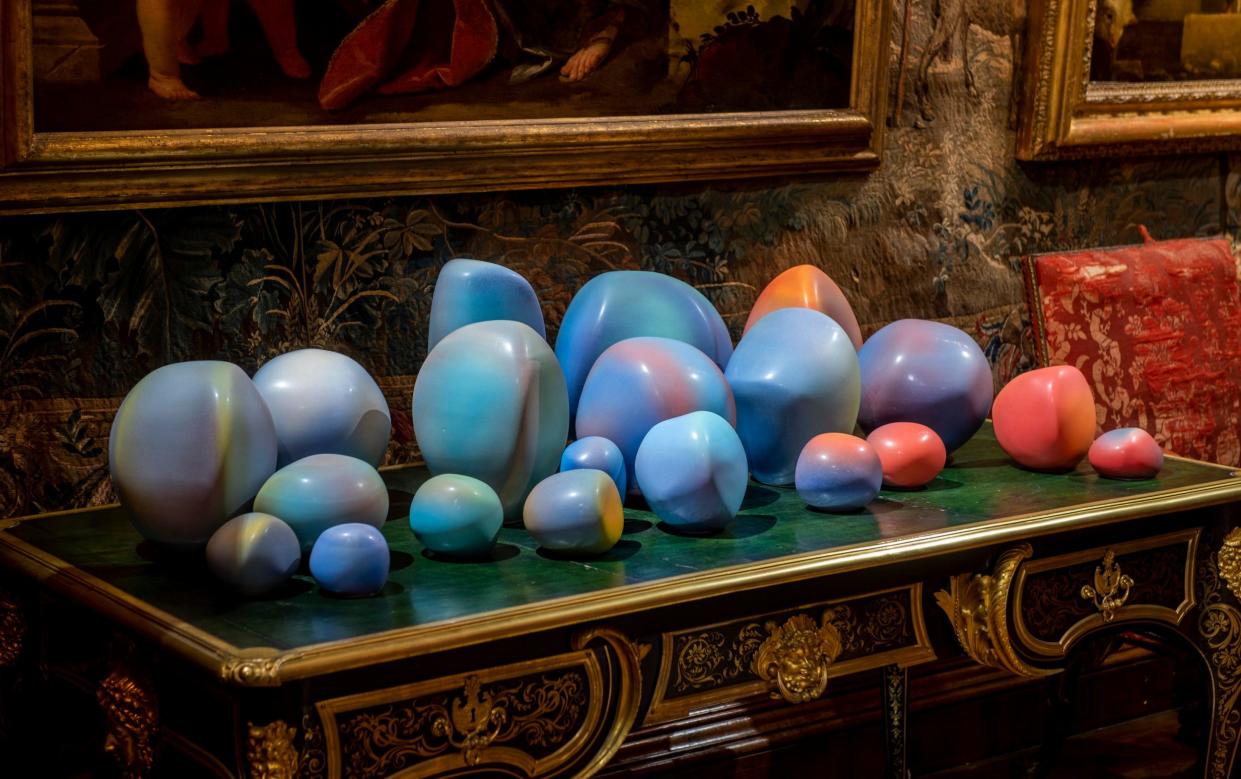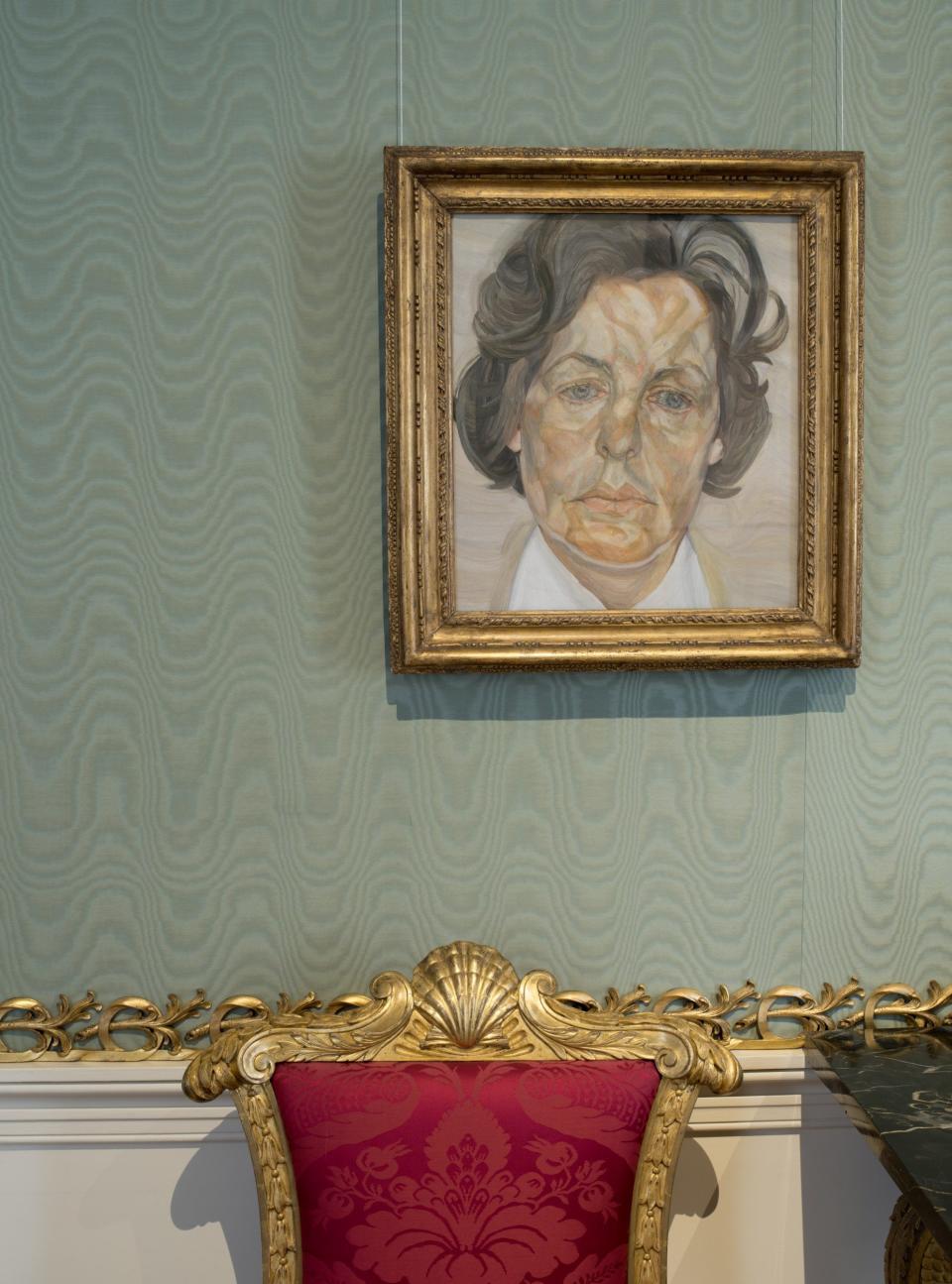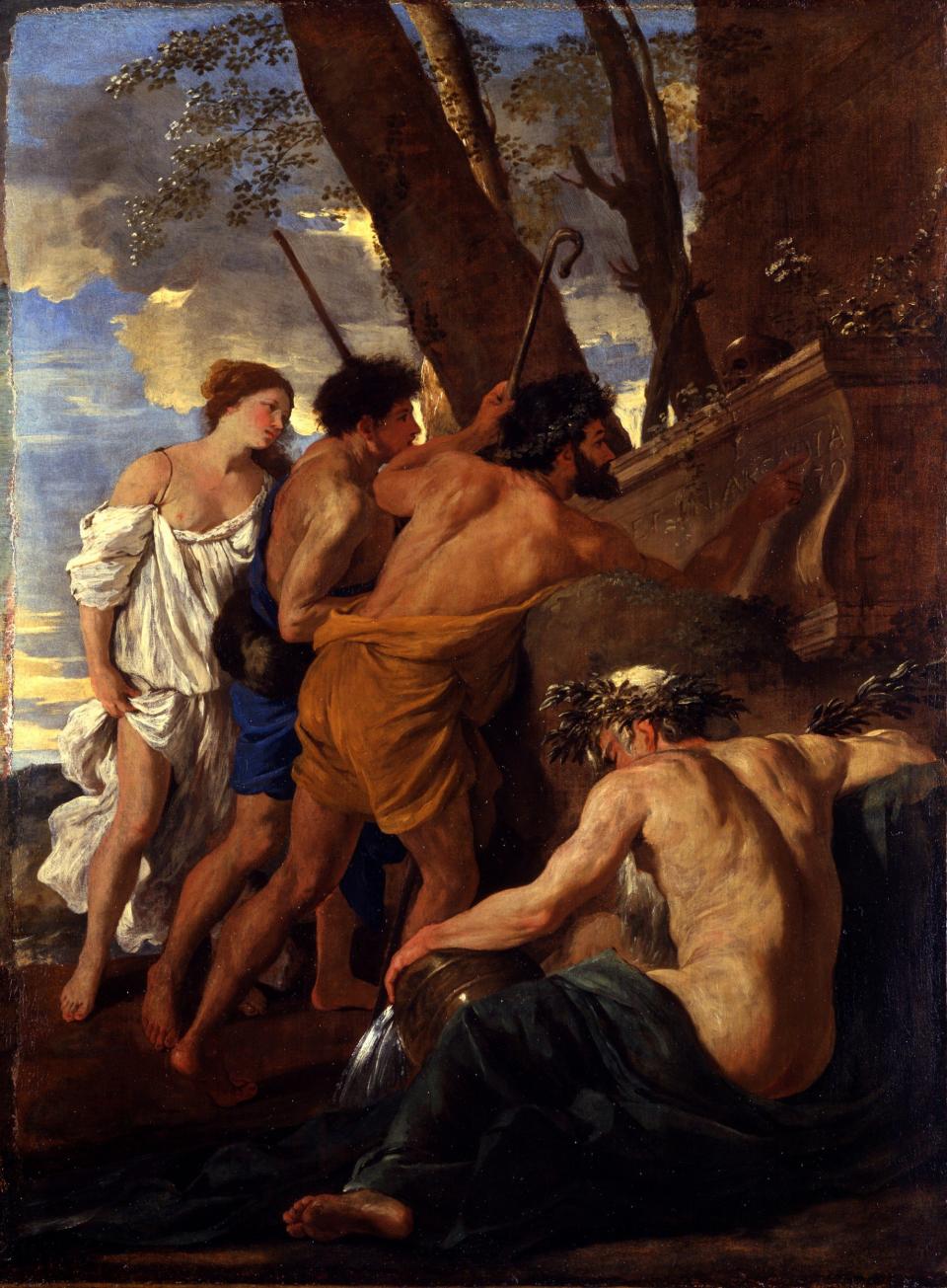Living with Art We Love, Chatsworth, review: beautiful art in astonishing surroundings

- Oops!Something went wrong.Please try again later.
What links a 19th-century Edwin Landseer painting and a 2007 7ft Felicity Ayliffe ceramic pot? A collection of Picasso drawings and two Rembrandt paintings? An intimate 16th-century Boltraffio portrait and an Edmund de Waal sculpture from 2019?
These eclectic pairings are not the imagined juxtapositions of a fantasy art auction, or a particularly blockbuster episode of Antiques Roadshow. Rather, they are the products of the brilliantly varied collection at Chatsworth, the country house in Derbyshire that is home to the Duke and Duchess of Devonshire.
Originally built by Bess of Hardwick in the late 16th century, and then rebuilt after the upheavals of the Civil War, Chatsworth has been home to the Cavendish family – and their art collection – for nearly 500 years. The current Duke and Duchess have lived within its yellowed sandstone walls for 16 years.
This exhibition, Living with Art We Love, is a celebration of their tenure in the house – their lifetime collection of contemporary works sits in grand staterooms, opulent guest bedrooms and mirrored chambers.
The collection is impressive. Barry Flanagan’s instantly-recognisable hares, a touch of Damien Hirst gaudiness, and Dame Elisabeth Frink’s bronze dogs – the house is filled with more than its fair share of big-name sculptors.

But these more famous works sit aside those of lesser-known local artists: Sara Moorhouse is a ceramicist from Sheffield, just 15 miles from Chatsworth. Her colourful pots brush up against decadent gilded wallpaper, and sit on inlaid 18th-century furniture.
This contrast between old and new is present throughout the exhibition. The (now deconsecrated) chapel has remained virtually unaltered since the late 17th century; the first Duke could walk in today, recognise the paintings by Louis Laguerre and woodwork by Samuel Watson, and feel oddly at home. That is, until he noticed the gold naked body of St Bartholomew holding his flayed skin standing in the altar.
This 2006 Damien Hirst piece sits directly opposite a piece from the historic collection by Poussin: The Arcadian Shepherds. The scene – also known as Et in Arcadia Ego – depicts a group of classical shepherds discovering an overgrown tomb. In its current position, it is less a reminder of death than it is continual re-invention and re-invigoration.
Other juxtapositions work similarly well: the Pop Art-esque screenprints of chairs by Michael Craig-Martin sit above original William Kent furniture, while Anthropologie plates used by the Duke and Duchess’s grandchildren are hung next to ceramic works by Fornasetti.

The Duke and Duchess are aware of how transitory their collection is. While historic works owned by the trust are likely to stay in the house, their own pieces may well move on when the house is passed down – and some are as much artworks as they are well-used utensils. There is a delight in this: when I visited, they were still deciding which ceramics to place where, and contemporary silverware was still being used to hold sugar cubes.
One highlight is a room of works by Lucian Freud, a friend of the 11th Duke and Duchess of Devonshire. He painted the 11th Duchess (“Debo”, one of the Mitford girls) and her portrait is hung opposite some of his lesser-known works on paper, including a lino-cut made when he was only 14.
There is the potential to be overwhelmed by the sheer variety of works – and, within such a cornucopia, it is inevitable that not everything will be to everyone’s taste. But, with everything from Paula Rego to famous 18th-century paintings that most of us will only have ever seen on Wikipedia, there is no shortage of art to be delighted by. If only it were possible to sleep in one of the decadent bedrooms and spread the delights over more than one day.
From March 26-0ct 9; chatsworth.org

